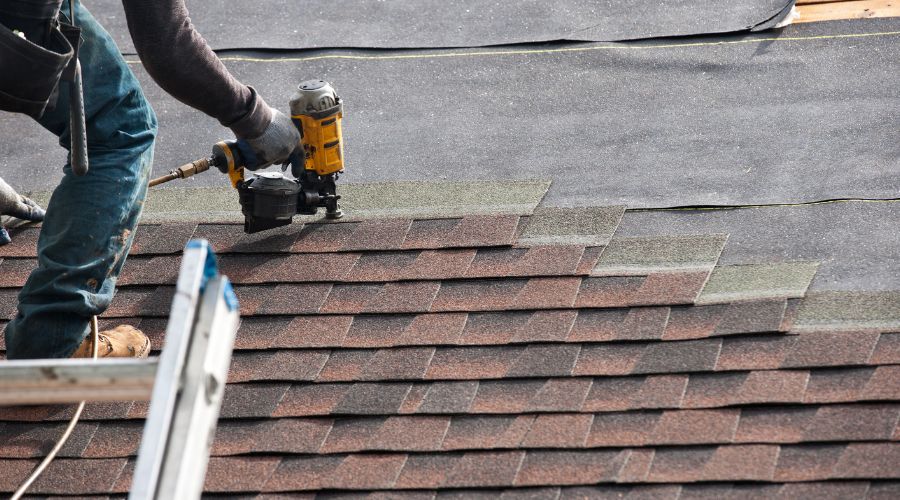
A commercial property’s roof plays a significant role in preserving the building’s structural integrity and protecting it against a wide range of weather exposures (e.g., wind, hail and rain). As a roof ages, it becomes weaker and increasingly vulnerable to structural failure. Additionally, older roofs may be more prone to coverage exclusions in commercial property insurance policies and could contribute to denied claims when related losses occur.
With this in mind, it’s evident that neglecting the age of their roofs could leave commercial building owners with serious structural issues, property losses and coverage challenges. As such, it’s important to understand these concerns and take steps to address them. This article provides more information on the impact of roof age on commercial property insurance and offers tips to minimize associated risks.
Structural Issues
The average lifespan of a roof differs based on the materials used to construct it; however, industry research shows that structural issues generally become more common in roofs that are over 20 years old. Specifically, older roofs are more likely to have the following problems:
• Deteriorated or defective materials (e.g., cracks, holes and missing or corroded shingles)
• Moss, mildew and mold growth
• Sagging, sloping or rotting areas
• Leaks, moisture accumulation and drainage issues
These structural issues can increase the likelihood of older roofs collapsing or experiencing large-scale damage during certain weather events. For instance, high winds could rip off already weakened shingles, and hail could easily penetrate and even destroy deteriorated or defective roofing materials. In fact, the Insurance Information Institute reported that more than one-third (34%) of all property insurance claims arise from wind or hail damage, with most of these claims involving roof-related losses.
In the event of heavy rain or flooding, older roofs may succumb to excess moisture and cause widespread water damage. This is particularly concerning for commercial buildings located in hurricane-prone areas. According to catastrophe modeling company Moody’s RMS, older roofs can contribute to as much as 50% more property damage when hurricanes strike.
Altogether, these issues can elevate commercial property exposures, leaving insurers hesitant to provide coverage for buildings with older roofs. As a result, most commercial property underwriters leverage roof age data in conjunction with other factors (e.g., location and maintenance schedules) to estimate how well buildings will withstand the elements and assess total risk levels. In particular, an underwriter may utilize roof age data to calculate a commercial property’s wind resistance and related structural integrity. These calculations help underwriters decide whether buildings with older roofs can receive coverage or are too risky to insure.
Coverage Complications
Based on average roof age data, most commercial property insurers either limit or fully exclude coverage for buildings with roofs that are over 20 years old. Nevertheless, building owners aren’t always honest about the age of their roofs. This dishonesty may be intentional or due to outdated property documentation.
Regardless, providing incorrect roof age data—namely, claiming a roof is newer than it actually is—will likely lead to inaccurate risk assessments during the underwriting process, ultimately skewing premium calculations. According to multinational data analytics firm Verisk, this is a serious problem; incorrect roof age data costs insurers more than $1.3 billion in premium leakage each year.
Building owners with older roofs may temporarily experience reduced commercial property insurance premiums by providing inaccurate roof age data, but this fraudulent strategy won’t pay off in the long run. Rather, it will create misalignment between building owners and insurers, causing increased tension during the claims process. In other words, when building owners encounter property losses involving older roofs, insurers will discover that they were given incorrect roof age data and likely deny the associated claims. Furthermore, insurers will adjust building owners’ risk levels and premium calculations based on updated roof age data, potentially resulting in higher rates or additional coverage limitations going forward.
Even when providing accurate roof age data, building owners should be aware of the possible coverage complications that may arise while navigating the claims process with older roofs. For instance, building owners with policies that offer actual cash value (ACV) coverage could be left with considerable out-of-pocket costs if property losses require them to replace their older roofs. ACV coverage relies on the depreciated value of the affected property or structure when providing a payout; in the case of an older roof, this payout probably wouldn’t be enough to cover the full cost of a new roof.
In addition, older roofs may be noncompliant with the latest building codes, which are evolving standards established by local officials regarding safe property construction. When property losses occur, building owners must ensure roof replacements or repairs are up to code with current standards; however, not all insurers provide coverage for building code upgrades, potentially exacerbating out-of-pocket costs.
Risk Mitigation Strategies
Considering the impact of roof age on commercial property insurance, it’s vital for building owners with older roofs to reduce their risks. Here are some best practices for property owners to keep in mind:
• Conduct regular maintenance and repairs. It’s crucial for building owners to perform routine maintenance to prolong the lifespan of older roofs and preserve their structural integrity. Maintenance may involve implementing cleaning procedures to minimize moss, mildew and mold growth; removing excess debris (e.g., fallen branches, leaves, dirt and sticks); upholding effective drainage systems; and making minor repairs (e.g., patching holes and sealing cracks) when necessary. If possible, property owners should also consider including periodic building code upgrades in their maintenance plans.
• Provide accurate documentation. Building owners should maintain sufficient property documentation, thus allowing underwriters to conduct accurate calculations and preventing misalignment with insurers. This documentation should include roof maintenance schedules, repair records and, above all, accurate age data.
• Ensure proper coverage. To secure adequate financial protection amid property losses, building owners should work with insurance professionals to review their policies and determine their specific coverage needs. For example, building owners with older roofs may benefit from having policies with replacement cost value (RCV) coverage rather than ACV coverage, as RCV coverage considers the cost of replacing the affected property or structure with a comparable alternative using current prices.
Conclusion
The age of a roof can pose a variety of coverage challenges for commercial property owners. Fortunately, by understanding these challenges and implementing measures to combat them, building owners can limit their associated exposures.
©2024 Zywave, Inc. All rights reserved.
Further Reading

5 Insurance Mistakes Entrepreneurs Make
Discover the top 5 insurance mistakes that entrepreneurs often make and learn how to avoid these common pitfalls.

What Employers Should Know About Hush Trips and Workcations
The traditional concept of a vacation often involves escaping the daily grind and relaxing in a faraway destination. However, the landscape of work...
